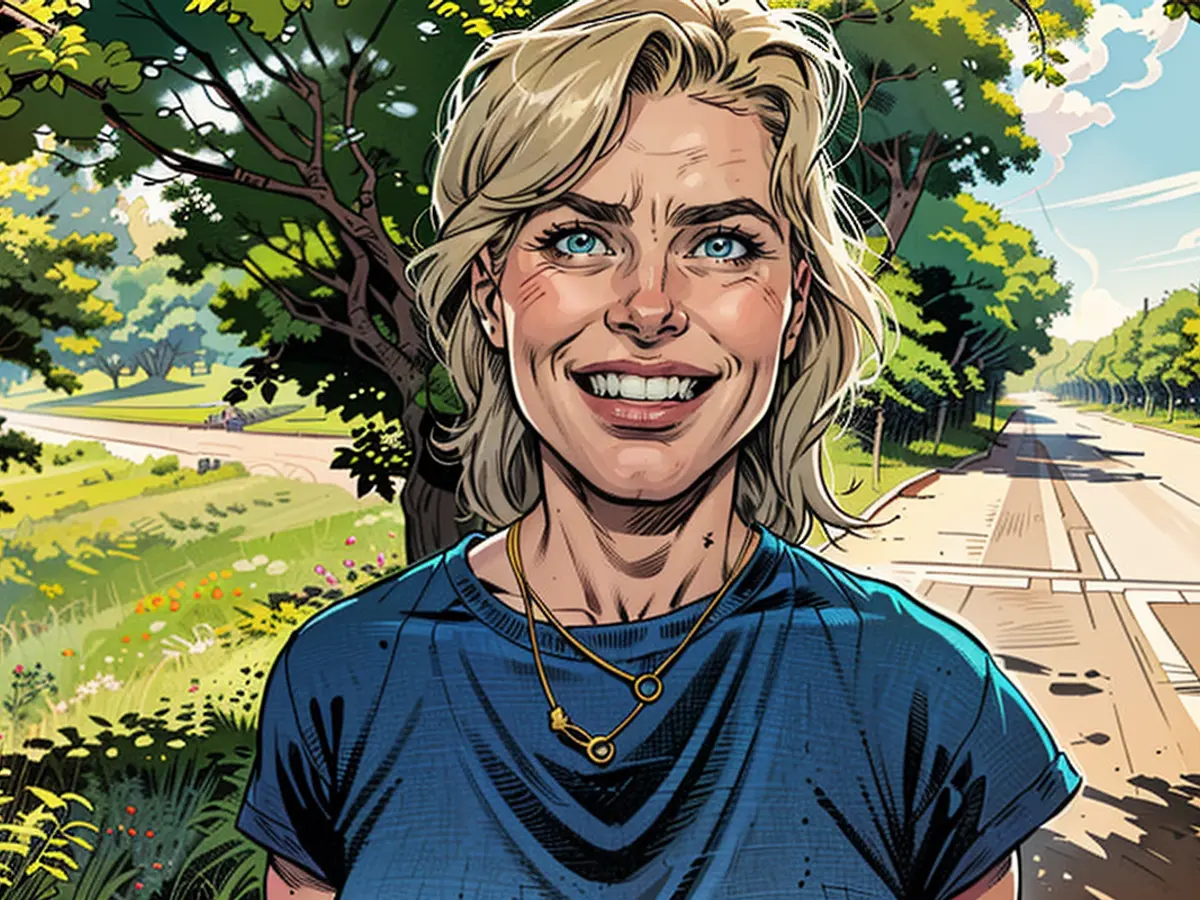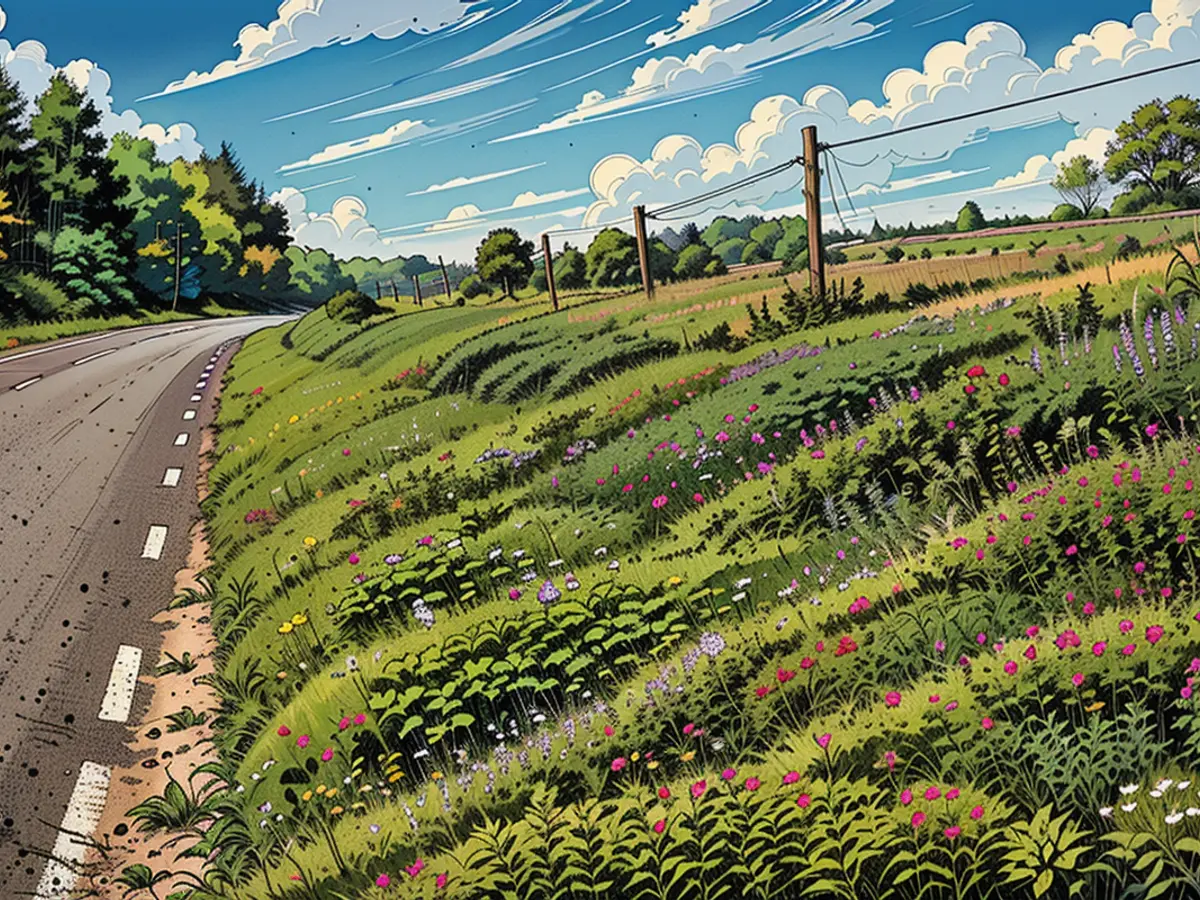Can roadside landscapes serve as salvation for pollinators?
When the term biodiversity typically pops up, people usually picture habitats like tropical rainforests or coral reefs. Urban streets, however, seldom cross one's mind. Yet, their role in biodiversity is substantial, although intricate.
Ecologist Svenja Horstmann spent a major chunk of her 2021 summer in Swedish streets. She's a 30-year-old German researcher, pursuing her PhD at Uppsala University, examining the impact of traffic on insects. "I strolled alongside the roadside with my insect net, capturing bees, bumblebees, and butterflies," she shared about her fieldwork experience with ntv.de.
For three months, Horstmann and her assistant Sophie Müller systematically gathered and identified various insect species at 40 different road locations. Their project was funded by the Swedish Transport Administration, which handles long-term transportation route planning and maintenance in the country.
Many of the species found near the roads today are indigenous to the near-natural grasslands that once covered vast portions of Europe until the last century. These lands were primarily utilized for grazing livestock or winter-feed vegetation harvesting. As Horstmann elucidates, these grasslands, over centuries, evolved into one of the world's most biodiverse habitats. They're rich in plants offering abundant pollen and nectar for bees and butterflies, and shelter for other insects. The soil and bushes or plant stems also provide numerous nesting opportunities for insects.
Unfortunately, these species-rich grasslands are becoming increasingly scarce due to intensified agriculture and forest expansion in some Swedish areas. Some sites have been lost due to discontinuation of grazing land. Road verges offer a potential alternative. They're mowed only once or twice annually in Sweden for safety considerations, which is advantageous for plenty of plants and insects.
No easy answers
In recent years, road verges have emerged as a topic of research as a probable substitute habitat for plants and pollinators enduring the loss of near-natural grasslands. Horstmann corroborates, "In Sweden, some road verges are deliberately mowed only once instead of twice for biodiversity reasons. This results in more flowering plants in the summer, and the more flowering plants there are, the more bees and butterflies there are along the road. However, it's not that straightforward."
This could also give rise to other consequences. For instance, it could create favorable conditions for grasses, which provide minimal resources for bees and butterflies, potentially harming insects in the long term. Furthermore, gravel strips along roads place stress on the habitat – noise, exhaust emissions, turbulence from moving vehicles, or chemicals used for ice removal.
Horstmann's research unveiled that heavy traffic has a significant impact on narrow roadside strips. In strips less than 3 meters wide and with high traffic, she discovered fewer bees, butterflies, and overall species compared to wider strips with both high and low traffic. "Wide roadside strips and less traffic is the best option."
Possibly an ecological trap?
The impact of "replacement grasslands" extends to the surroundings. To assess the extent, Horstmann planted wild strawberries at 20 and 100 meters from the roadside. "We observed how many pollinators landed on the strawberry blossoms and likely pollinated them." Later, they harvested the ripe strawberries for examination. "The fascinating aspect of strawberries is the tiny achenes on the outside. When they're close and possibly still green, and there's no flesh between them, that indicates poor pollination. Although strawberries can also be wind-pollinated, insect pollination results in better yields." This way, Horstmann demonstrated that roadside strips with more flowering plants attract more insects to pollinate strawberries up to 100 meters away.
Horstmann's findings have been published in numerous scientific articles and ensued recommendations for the Swedish Transport Administration. "I will propose, particularly on roadside strips or roads with less traffic, to mow in a manner promoting biodiversity. However, not necessarily on roads with heavy traffic." Additionally, there's a trial where the cut grass is removed. Previously, it was usually left and decomposed, returning nutrients to the soil. "Nutrient-poor soils are beneficial for many flowering plants that would normally thrive under similar conditions in near-natural grasslands, consequently, for bees and butterflies."
In a few years, the guideline might encourage one-yearly mowing on less busy roads and disposing of the cut grass, provided roadside strips don't turn into an ecological trap for pollinators. "A wild bee seeking a habitat for nesting or nectar and pollen sources might find the roadside appealing," Horstmann explains this situation. But breeding there could result in higher mortality rates due to traffic. "In the worst-case scenario, this could lead to mass immigration, but then the species may simply disappear due to traffic impacts or locally go extinct."
After spending three years scrutinizing by the roadside, Horstmann's preliminary findings hint at intriguing discoveries. She's enthusiastic about future investigations, possibly in different nations, to strengthen her findings. As a dedicated ecologist, aiming to grab her PhD by year-end, the abundance of various species in her locality serves as a stark reminder of nature's significance. She muses, "It's just mind-boggling. And I reckon we humans often underestimate our comprehension. That just makes me admire it more."
Education plays a crucial role in Svenja Horstmann's research on road verges and insects. Given her background as a German researcher pursuing a PhD at Uppsala University, Horstmann has likely gained extensive knowledge in ecology and biodiversity through formal education.
Moreover, Horstmann's findings have been published in numerous scientific articles, indicating her commitment to sharing her research and contributing to the global scientific community. This demonstrates the importance of education in facilitating the dissemination of scientific knowledge and promoting advances in various disciplines.








